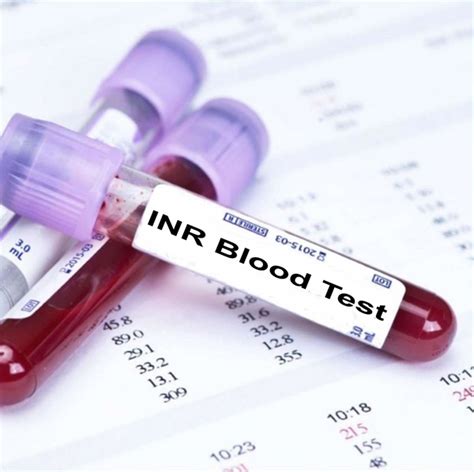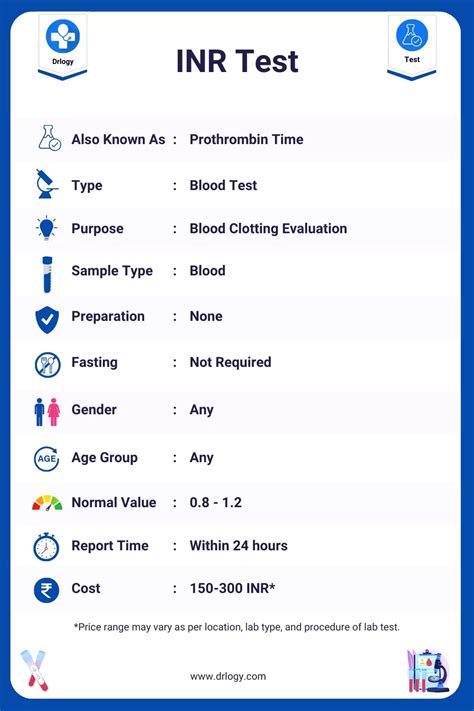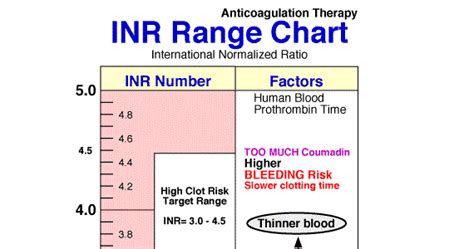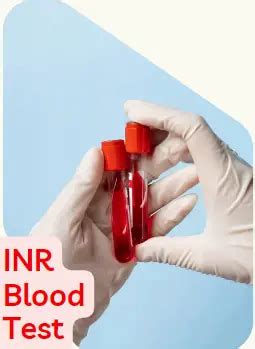Intro
Discover the INR blood test explained, understanding prothrombin time, and international normalized ratio for blood clotting, anticoagulation, and thrombosis management.
The importance of blood tests cannot be overstated, as they provide crucial information about an individual's health and help diagnose various medical conditions. One such test is the INR blood test, which measures the time it takes for blood to clot. This test is essential for patients taking anticoagulant medications, such as warfarin, to ensure their blood is within the optimal clotting range. In this article, we will delve into the world of INR blood tests, exploring their purpose, procedure, and significance in maintaining overall health.
For individuals taking anticoagulant medications, regular INR blood tests are vital to prevent complications such as bleeding or thrombosis. The test helps healthcare providers monitor the effectiveness of the medication and adjust the dosage as needed. Moreover, INR blood tests can also detect underlying conditions that may affect blood clotting, such as liver disease or vitamin K deficiency. By understanding the INR blood test, individuals can take a proactive approach to their health, ensuring they receive the best possible care.
The INR blood test is a relatively simple procedure that involves drawing a blood sample from a vein in the arm. The sample is then sent to a laboratory for analysis, where the INR value is calculated. The INR value is a ratio of the patient's blood clotting time to the normal clotting time, with a higher value indicating a longer clotting time. This information is crucial for healthcare providers to determine the optimal dosage of anticoagulant medication and minimize the risk of complications. With the importance of INR blood tests in mind, let's dive deeper into the world of blood clotting and explore the intricacies of this vital test.
What is an INR Blood Test?

How is an INR Blood Test Performed?
The INR blood test is a relatively simple procedure that involves drawing a blood sample from a vein in the arm. The sample is then sent to a laboratory for analysis, where the INR value is calculated. The test is usually performed in a healthcare provider's office or at a laboratory, and the results are typically available within a few hours. To prepare for the test, individuals should avoid eating or drinking anything that may affect the results, such as foods high in vitamin K.Why is an INR Blood Test Important?

Benefits of Regular INR Blood Tests
Regular INR blood tests offer several benefits, including: * Minimizing the risk of complications, such as bleeding or thrombosis * Ensuring the optimal dosage of anticoagulant medication * Detecting underlying conditions that may affect blood clotting * Allowing healthcare providers to adjust the treatment plan as needed * Providing individuals with a sense of control and empowerment over their healthInterpreting INR Blood Test Results

Factors that Can Affect INR Blood Test Results
Several factors can affect INR blood test results, including: * Medications, such as antibiotics or anti-inflammatory medications * Foods high in vitamin K, such as leafy green vegetables * Liver disease or other underlying medical conditions * Pregnancy or breastfeeding * Age and overall healthManaging INR Blood Test Results

Common Mistakes to Avoid
When managing INR blood test results, it's essential to avoid common mistakes, such as: * Missing follow-up appointments or failing to take medications as directed * Consuming foods high in vitamin K without informing healthcare providers * Failing to monitor INR values regularly * Ignoring changes in medical conditions or medicationsConclusion and Next Steps

What is the normal INR range?
+The normal INR range is typically between 0.9 and 1.1, but this can vary depending on the individual and their medical condition.
How often should I get an INR blood test?
+The frequency of INR blood tests depends on the individual and their medical condition. Generally, patients taking anticoagulant medications should get an INR blood test every 1-4 weeks.
What can affect INR blood test results?
+Several factors can affect INR blood test results, including medications, foods high in vitamin K, liver disease, and pregnancy or breastfeeding.
We hope this article has provided you with a comprehensive understanding of INR blood tests and their significance in maintaining overall health. If you have any questions or concerns, please don't hesitate to reach out to your healthcare provider. Share this article with friends and family to help spread awareness about the importance of INR blood tests. Together, we can work towards a healthier and more informed community.
